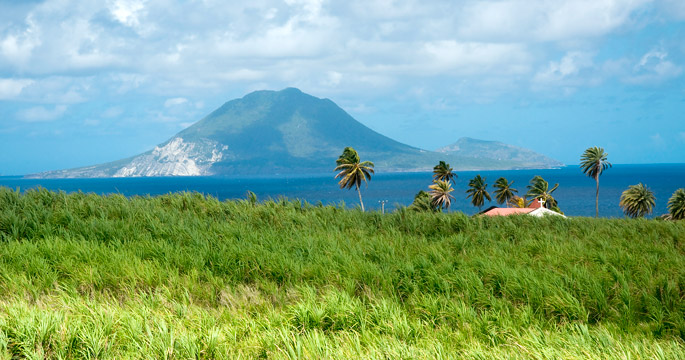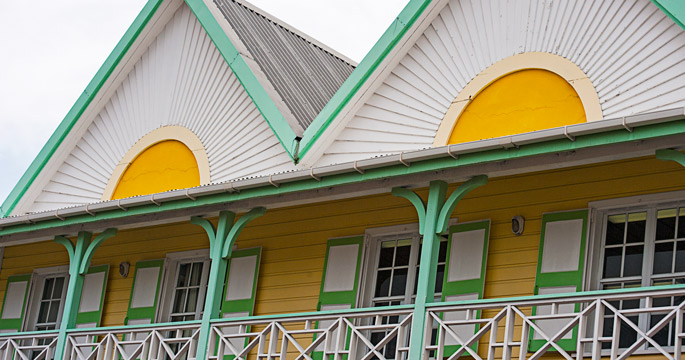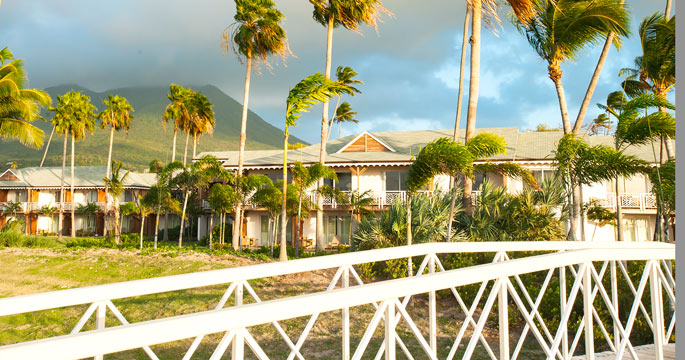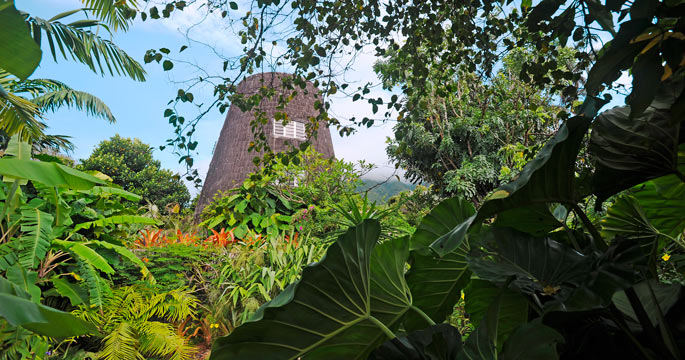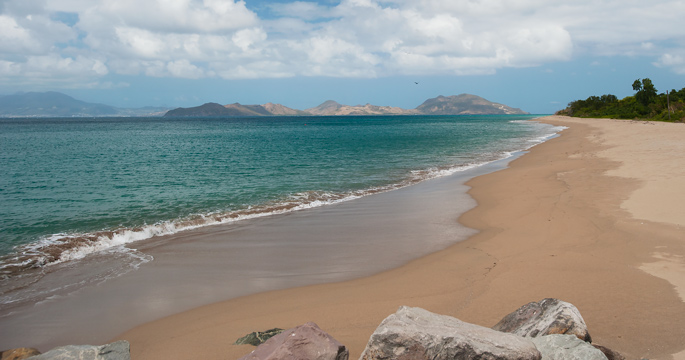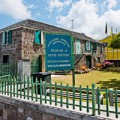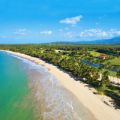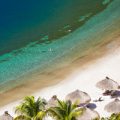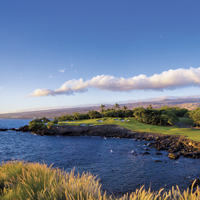Off the mainstream tourism radar and free of cruise ship traffic, the tiny island of Nevis is a lush circle of green dropped in a turquoise sea. Getting there requires a small plane flight from the sister isle St. Kitts or a ferry ride across the 2.5 mile channel that separates these two islands of the same nation. Unspoiled and only lightly developed, Nevis puts nature at the forefront, and welcomes visitors to a culture that is warm yet still a little bit reserved. It is an attitude that seems thoroughly in step with the island’s elegant plantation past, as well as its low-key present.
1 Old Caribbean
Nevis remains a charming reminder of a bygone era seldom seen in the rapidly changing Caribbean of today. There are no traffic lights or roadway congestion, and goats still roam freely through the capital of Charlestown without attracting attention. The island’s favorite afternoon pastime is “liming,” which involves little more than sitting on the front porch with friends and neighbors, conversing and relaxing while a soft breeze brings the sweet smell of frangipani. Life is simple, easygoing and definitely slow-paced, and most of the residents hope to keep things that way. Some say that a day of relaxing on Nevis is equal to a week anywhere else.
2 Four Seasons
One of the Caribbean’s flagship properties, this five-diamond resort is a source of pride for the island. Sophisticated and sumptuous, it sits on 350 lushly landscaped acres overlooking Pinney’s Beach, the island’s finest. There is a sprawling 18-hole Robert Trent Jones II golf course, and in addition to the well- appointed guest rooms, a number of private villas overlook the greens. At the end of the day, there’s no better place to enjoy a sunset over the water than at an open-air table at the resort’s Cabana restaurant, where sea views engage as you savor the bar’s signature cocktail, the Nevisian Smile.
3 Sugar Mills
Thanks to its fertile volcanic soil, Nevis thrived as one of the Caribbean’s major producers of sugar cane and cotton during colonial times. Sugar mills were constructed to process the sweet crop, and the remains of these mills can still be seen across the island, some nearly intact, others little more than crumbling mounds of stone. Those that have been well cared for and restored have become one of the island’s main attractions. At Golden Rock, a two-level space inside the conical structure appeals to honeymooners seeking intimate seclusion. While at Montpelier, romantic gourmands delight in a candlelit dinner inside the 300-year-old mill that is the centerpiece of the resort’s estate.
4 Local Eats
On the island’s west coast, popular Pinney’s Beach is the perfect place to grab an inexpensive but savory lunch, take a dip, listen to some live music and chill. The three mile-long stretch of sand hosts a collection of local food stands and rustic beach bars. One of the originals was Sunshine’s, famous for its Killer Bee cocktail, live music and barbeque ribs and chicken. Other favorites include Chevy’s Calypso Beach Bar & Grill, where the Stinger Bee reigns, and The Lime Beach Bar, which features a rum concoction called the Green Flash.
5 Race Days
Though some might find it hard to believe, the same island that puts a premium on relaxation is a favorite with athletes. With its year-round good weather, warm water and uncrowded roads and trails, Nevis is an ideal venue for training and races. A 24-mile circuit around the island provides ever-changing views, giving athletes something to focus on other than their tired muscles. In March, the annual Nevis to St. Kitts swim takes participants across the 2.5 mile channel, while September is the month for a series of road races that include 5K and 10K runs, plus a full marathon. The athlete’s trifecta is the November triathlon, where bicycling is added to the other two disciplines and the island turns into one big party.
6 Nevis Peak
Its towering profile captivated Columbus when he sailed past cloud-covered 3,232-foot Nevis Peak. Mistaking it for a snow- topped mountain, he named it “Nuestra Senora de las Nieves” or Our Lady of the Snows. Today this extinct volcano entices hikers to explore the green slopes, which are enveloped in rainforests and laced with footpaths. Hardy hikers can make it to the top, but not without pulling themselves up by ropes and sliding about on slippery mud. More casual strolls can be found along meandering paths lined with giant ferns, creeping vines and gum trees.
7 Plantation Sleepovers
There are four plantation inns on Nevis that showcase the island’s elegant past and create the setting for an equally sumptuous present. History abounds at Nisbet Plantation where the stone great house dates back to 1758 and Horatio Nelson married local widow Fanny Nisbet. A 19th century stone mill is the centerpiece of Golden Rock Inn, which offers just nine intimate villas sequestered in a garden environment, with grand views of the sea. The Hermitage Plantation is a quaint and cozy collection of former chattel houses assembled from across the island, and Montpelier Plantation is an elegant estate that has been tagged as a Relais Chateaux property.
8 Monkeys
African green vervet monkeys were originally brought to Nevis as pets. Today, these colorful simians outnumber the island’s human population. Local gardeners sometimes curse them, but visitors delight in their antics. The animals are often seen on the Four Seasons property, where there is a sign that reads “monkey crossing.” Early morning and late afternoon are the best time for sightings, but any mango tree with ripening fruits is surely to attract a family or troop eager for the sweet flesh. On the hillside of Golden Rock, where many residents maintain fruit trees, there is a popular trail that is often referred to as the monkey walk.
9 History Lives On
History buffs delight in the details of the island’s past. Captain John Smith and his crew made a brief landing on Nevis in 1607 before continuing to Virginia to found Jamestown. English settlement came in 1623, and the French soon followed suit, promoting years of struggle before the island finally fell in the hands of the British. Alexander Hamilton was born on the island, and a museum in Charlestown unveils his past. A walk through the capital of Charlestown showcases a collection of vintage Caribbean buildings with pastel walls and tin roofs. Other historic highlights include the St. Paul’s Anglican Church and the restored St. Thomas Lowland Church, which dates from 1640.
10 Underwater Worlds
Nevis’ western shoreline is washed by clear waters that beckon snorkelers and divers. Rather than dropping immediately into the depths, the underwater terrain between Nevis and St. Kitts features a series of undulating walls, sea mounds and grottoes, all covered in rich growths of sea fans and coral. These submerged hideaways are home to a tremendous variety of tropical fish and offer underwater adventures suitable for everyone from novice snorkelers to advanced divers. One can begin the adventure by simply wading in from the beach or board a dive boat to reach more distant sites.

